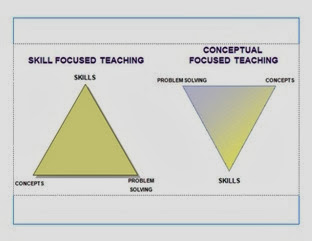In preparing for the Parent Night, we've been introduced to a great new resource, Number Talks by Sherry Parrish. Though we've been teaching like this for over ten years, this book nicely reminds us of the most common addition and subtraction strategies and provides teaching clips via DVD with sample number talks from many elementary grade levels. Using this resource, we've revised our math night to include the language of this text. An added bonus is that we will also get more unified and vertical language in all of our math classrooms in 2nd - 5th grade because we've shared the new strategy sheets through our Math Council.
To kick off Math Night, there is a clip on YouTube that we use as an icebreaker. A boy calls the 911 operator to get help with his "take away" math homework. The clip dissolves any math anxiety that might be lingering in the room. The, we launch with the purpose of the evening. We explain that what most of us grew up doing was skill based procedural mathematics and we have shifted to conceptual based learning that focuses on problem solving. Our intent is to build number sense with our young mathematicians. We embed skills and work to develop fluency and authomaticity, but our emphasis remains on building critical thinkers. Students who conceptually understand mathematics will preform at much higher levels as they move into more advanced mathematics. The research behind our explanation can be found in TIMSS, Trends in International Math and Science Study. We often show this triangle turned upside down as a visual while we explain.
In a matter of minutes, we've set the purpose and can share with parents the 2nd Grade Common Core Standards that relate to addition and subtraction. We explain that the standards drive our instruction. Our classroom assessments align with the learning set forth in the CCSS. Next, we are ready to move into the addition and subtraction strategies.
We give parents an addition and subtraction problem to solve. We ask them to solve the problem in two different ways. Most have the sum and difference in a matter of seconds, however some struggle as they try to come up with a second strategy.
The problems we ask them to solve are:
A) Bob and Sally were counting the students on the playground. Bob counted 36 students on the soccer field and Sally counted 45 students on the equipment. How many students did they count altogether?
B) Sally wanted to use red and blue construction paper for her art project. She took 57 sheets of paper. If 28 of the sheets were red and the rest were blue, how many sheets of blue paper did she take?
Delving deeply into our strategy work, we then provide a note taking sheet that lists the common strategies that students will discuss, share, and make connections between in Closing Session of Math Workshop.
We show a 2 minute clip from the Number Talks DVD on addition, and later show a 4 minute clip of subtraction. We want them to actually see what this looks like in a classroom. Then, we walk them through each strategy with the sample problem.
The strategies we share in addition include adding on, making a landmark number, compensation, decomposing by place value, and decomposing one addend. In subtraction, we share adding up, removal or counting back, place value with negative numbers, keeping a constant difference, and adjusting one number to create an easier problem. Integrated in our teaching of the strategies, we use math models and tools like the open number line, hundreds chart, and part/whole box.
Parents leave with a brochure that we've created using the sample problem and explaining each strategy. The brochure was created from the language found on pages 59-66 and 175-180 in Number Talks.
The evening concludes with a question and answer session and parents taking a look at their child's math journal and student sheets. We find that this proactive approach leaves parents less anxious when they see their children solving problems in ways that are unfamiliar to them. Our next feat will be to put together a multiplication and division evening for 3rd and 4th grade parents.
Stay tuned...
The strategies we share in addition include adding on, making a landmark number, compensation, decomposing by place value, and decomposing one addend. In subtraction, we share adding up, removal or counting back, place value with negative numbers, keeping a constant difference, and adjusting one number to create an easier problem. Integrated in our teaching of the strategies, we use math models and tools like the open number line, hundreds chart, and part/whole box.
Parents leave with a brochure that we've created using the sample problem and explaining each strategy. The brochure was created from the language found on pages 59-66 and 175-180 in Number Talks.
The evening concludes with a question and answer session and parents taking a look at their child's math journal and student sheets. We find that this proactive approach leaves parents less anxious when they see their children solving problems in ways that are unfamiliar to them. Our next feat will be to put together a multiplication and division evening for 3rd and 4th grade parents.
Stay tuned...




